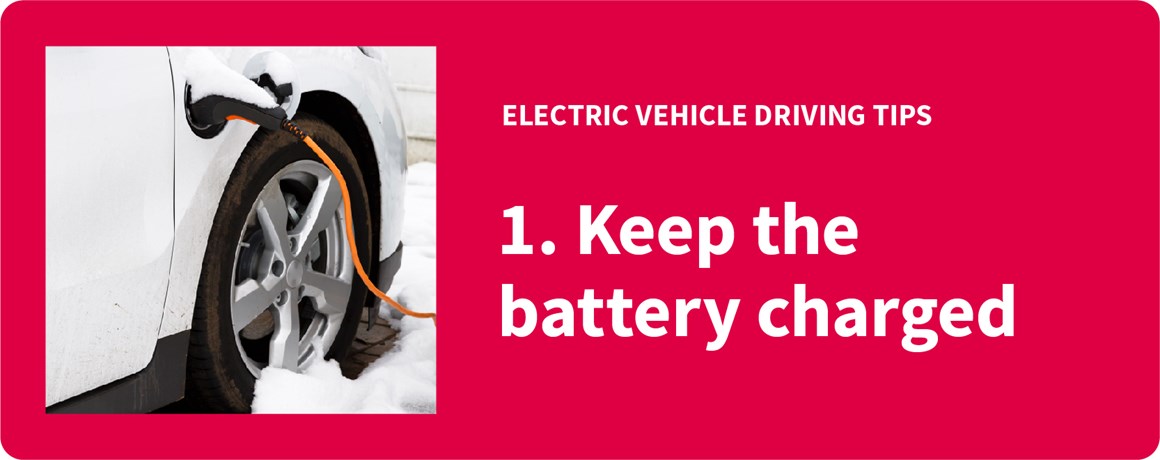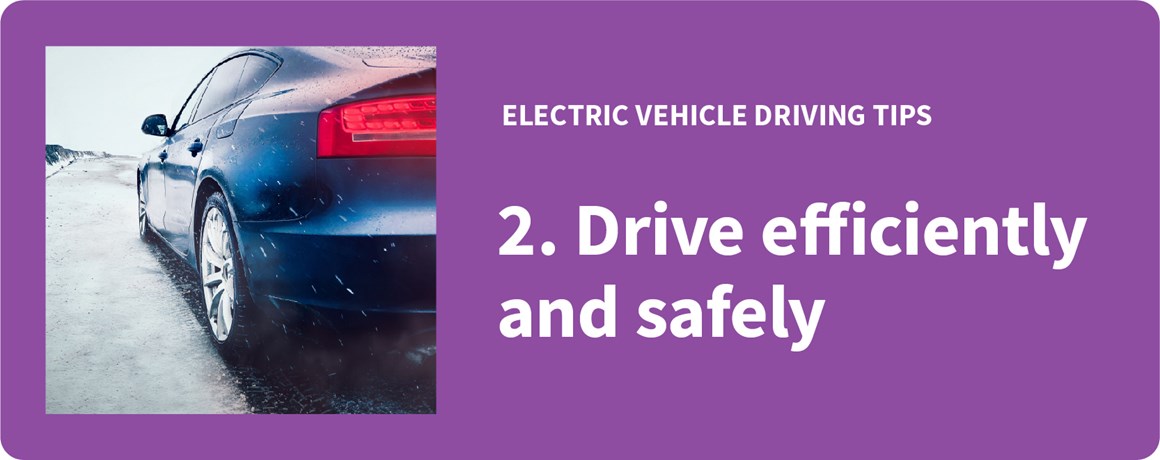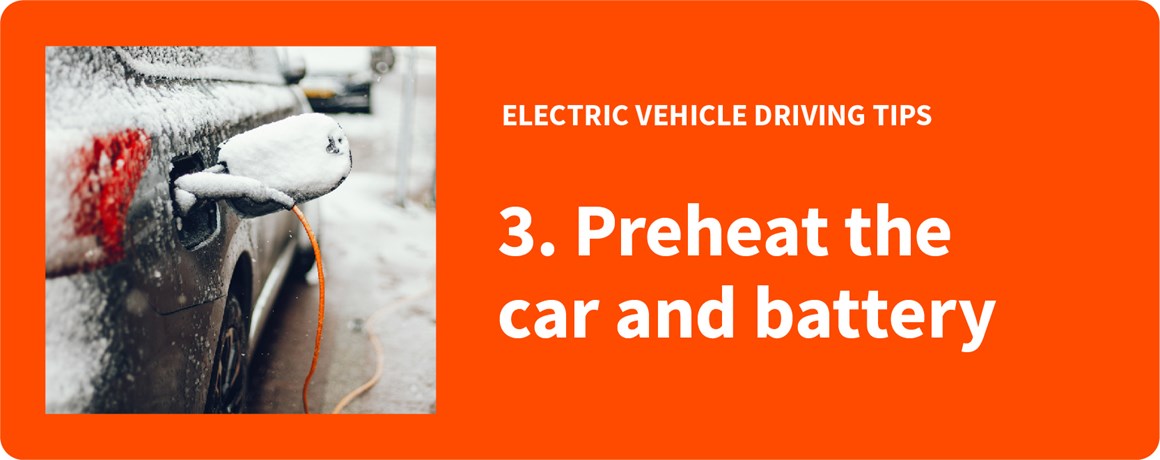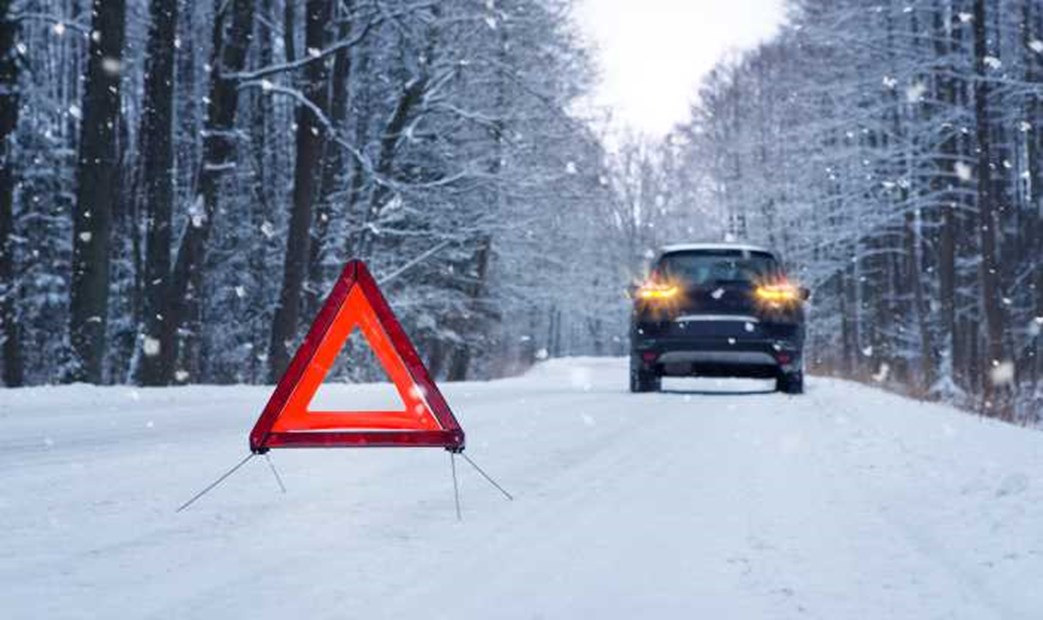When driving in cold weather, make sure you take precautions to keep yourself and your vehicle safe. Take a look at our top tips for winter driving.
Winter Driving Advice
Electrical Vehicle Winter Driving Advice
Electric Vehicles (EVs) are becoming more popular than ever - many of you may already have an EV parked outside or are considering one for your next vehicle. EVs on the market today have many safety and security features that make them very safe, but there are a few things to bear in mind for EV owners as the seasons start to change.
Keep the battery charged
In colder months, the performance of an electric vehicle may be diminished. This is because batteries tend to operate less efficiently in the cold. The range may be reduced by up to 5 - 20%.
If embarking on a longer trip, plan your route before setting off and identify EV charging stations along your route.
Consider turning on eco-mode which can help to extend the range by making some minor adjustments to other features of the car. It may for instance reduce the power of the heater or dim the headlights.
To keep your battery in top condition, it's always recommended to avoid completely running it down. This is also important in the winter, especially if you know you won't be using your car for a while. Where possible, try to keep the battery above 20% charge.
Drive efficiently and safely
To conserve battery power, avoid sudden acceleration or braking where possible. EVs conserve energy best at speeds under 60 mph. Steady acceleration and braking also reduces the risk of losing traction in inclement weather.
Given the higher curb weight of many EVs, they may have better traction in snow. However, the extra weight also means you should give yourself a bit of extra time to stop, increase following distances to vehicles in front, and slow down around corners – especially in icy conditions.
You should also set your steering sensitivity to ‘heavy’ if you have the functionality to do so when the roads might be slippery.
Preheat the car and battery
Many EVs have ‘preconditioning’, where you can set the car to warm up whilst it’s still plugged in, meaning you’re not using the car’s battery. Many models even allow you to do this remotely via their mobile app. However, always ensure your car is secure whilst preheating.
General Winter Driving Advice
Defrost your windscreen
Make sure your windscreen is properly defrosted before you start your journey. Consider keeping a bottle of de-icer and an ice scraper in your vehicle. After clearing the ice, to prevent the windscreen from fogging up, use the windshield vents to blow cold air and slowly increase the temperature.
Never pour hot water on the windscreen to melt the ice as the thermal shock can crack the glass.
Never leave your vehicle with the engine running to warm up and defrost the windscreen while you nip back inside, even if only for a few minutes… you never know who might spot the opportunity to drive off with your car!
Clear off any snow
Clear any snow build up on all parts of your vehicle (including the roof!) as clumps of snow falling off your vehicle can pose a hazard to road users around you. A snow brush with soft bristles or even a dustpan brush will make sure you do not damage the paint underneath.
Don’t drive through flood water
Whether you drive an electric vehicle or not, you should avoid driving through flood water. Not only could there be hidden hazards, but it may be deeper than it looks, and you could damage or even lose control of your car.
Keep your vehicle well maintained
This is especially important in winter. As the temperature falls, your tyre pressure will too. Make sure you keep an eye on the tyre pressure and tread depth. You want to be running at the optimum pressures to allow water and snow to be cleared by your tread pattern effectively.
Make sure both your front and back windscreen wipers are working properly, especially before driving in heavy rain.
If needed, switch to winter tyres which offer improved grip in cold weather. It is recommended to put winter tyres on your car when temperatures drop below 7°C.
It's also always a good idea to get your car serviced regularly to ensure that everything is in good working order. Properly working brakes are particularly important when driving on potentially wet or icy roads.
Be prepared
Ensure your mobile phone is fully charged and carry a charger and portable battery. Have warm clothes, blankets, water and non-perishable food in your vehicle, in case conditions deteriorate and prevent you from continuing, especially when driving in remote areas.
Should you be driving during a red weather alert your insurance will still be valid. We do advise that you pay careful attention to all local authority and police warnings.




